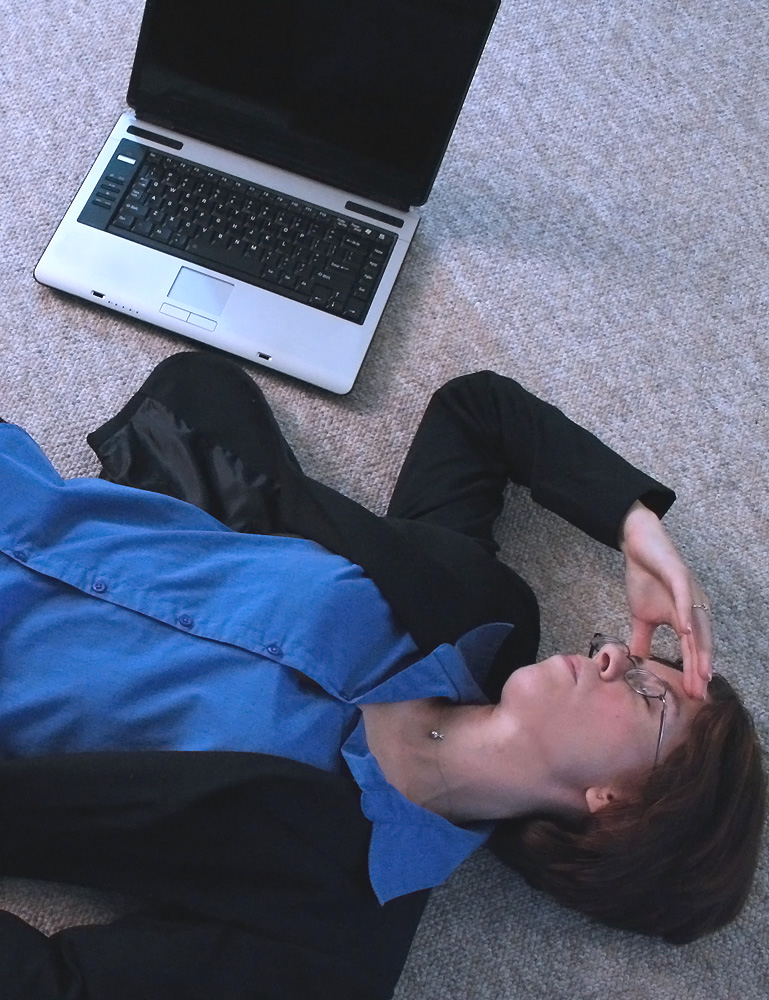
Tips to relieve headache
Headache is acute or chronic pain in the head and it is one of the most common symptoms and the most common pain that a person feels. Headache is caused by various things: change or constriction of the blood vessels of the neck and head, lack of oxygen in the brain, lack of glucose (when we are hungry), stiff muscles of neck and head, overuse of muscles and nerves of the eyes, and sinusitis. The head may hurt under the influence of hormones on blood vessels, and fatigue that affects the changing of the amounts of various chemicals in the brain. In serious diseases such as head injury, stroke, bleeding in the head or a tumor, head hurts due to contraction of blood vessels and pressure on the nerves of the head.
People describe the headache differently like feeling of "dull" pain, pressure in the head, drumming, pulsing, burning or "blurry head". Headache may occur rarely and frequently, this may be diffuse (when the whole head hurts) or localized (when only one area of the head hurts). During life a headache occurs as a symptom of various conditions such as fatigue, stress and insufficient amount of sleep, excessive consumption of alcohol and tobacco, abstinence from coffee and alcohol, sudden exposure to cold or long-term high temperature of air. It occurs as a hypersensitivity to some food. Headache is a symptom of some ailments, such as premenstrual syndrome or a symptom of a range of diseases, from mild, such as the common cold, otitis or sinusitis, tooth and gum disease, to serious eye or brain diseases. Interestingly, headaches can also occur as a side effect of excessive use of painkillers.
Headaches can be divided into primary and secondary, or those in which you cannot determine the organic cause of origin and those caused by other diseases.
Migraine, tension headache and cluster headaches are primary headaches.
Headaches induced by head and neck injuries, disorders of the blood vessels of the head and neck, and headache associated with infections (e.g., meningitis), and headache associated with mental disorders are secondary headaches.
Special group of headaches are neuralgias, headaches that occur due to injury or disease of nerves, and the most famous is trigeminal neuralgia, a nerve that passes through the face to the tip of the lower jaw.
Tension headache is very common. Pain overtakes the entire head, and may be the result of fatigue and sleep deprivation, hunger, emotional stress and nervousness or excessive physical activity. This headache feels like a "blurry head", "dull" pain or pressure.
In some people it is very common, occurring once in 15 days and lasts from several minutes to several hours. If it occurs frequently, for example, every two weeks for longer time, you must visit a doctor.

Symptoms of migraine are very distinctive - pain overtakes only one side of the head. We can differentiate between migraine without aura and with aura, in which the patient before the attacks of pain has visual disturbances (flashes or blurring before his eyes), "hears" sounds that do not exist. Pain is throbbing, intense, frequently accompanied by nausea, vomiting and sensitivity to light or noise. Unlike tension headache, which is extremely rare in children and is usually associated only with colds, migraines can also occur in children.
Cluster headache occurs in men for unknown reasons, and it is characterized by extremely strong pain in one half of the head, which occurs in "clusters" in the same period of the year, in the same period of the day, and last the same time.
| Symptoms of migraine can be relieved by changing lifestyle. It is important to introduce "good rhythm": enough sleep and rest, regular and healthy diet, and physical activity that stretches and strengthens the muscles of the neck and back. |
| Migraine is more common in women than men, and it is known that there are "triggers" for the attack: fatigue, hunger, some foods (aromatic cheeses, nuts, dried fish), menstrual cycle. They do not cause migraines, but only a migraine attack, and it is believed that the causes of migraine are changes in blood vessels in the head. |
Your email address will not be published. Required fields are marked *